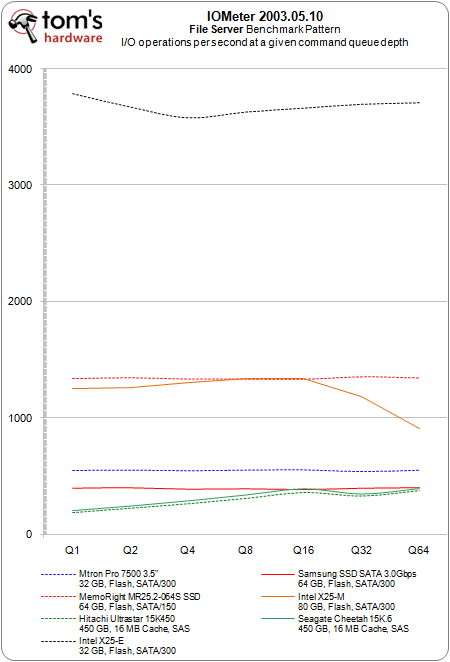Intel’s X25-E SSD Walks All Over The Competition
I/O Performance, Access Time
Let’s look at the juicy benchmarks now:
As expected, the I/O performance of Intel’s X25-E is amazing, beating all of the competition. Using our database benchmark pattern—which reads and writes small chunks of data—the X25-E delivers at least 5,000 I/O operations per second, dropping to around 3,000 I/Os per second at deep command queues. Obviously, the controller and its caching mechanism do not introduce an advantage in this scenario. However, the X25-E is still at least four times faster than the second-best SLC flash SSD, the Memoright MR25.2-064S. We also found it interesting that the X25-M also did rather well. However, the results with large command queues show that the MLC flash memory clearly isn’t as fast.
The file server performance results are similarly impressive.
Think of an HTML document, which consists of text and several images, and you’ll understand what Web server I/O requests look like. Most flash drives do well in this benchmark, as they are quick at random reads. Mtron’s Pro 7500 obviously was optimized for random reads, as it is the best in this benchmark. Intel’s products are second and the others follow close behind, delivering 10X better I/O performance than our two 15,000 RPM hard drives.
The workstation benchmark pattern utilizes 64, 128 and 256 KB block sizes, with 80% reads and 80% random access. The X25-E takes off again here, leaving every other drive in its dust.
Get Tom's Hardware's best news and in-depth reviews, straight to your inbox.
Current page: I/O Performance, Access Time
Prev Page Throughput, Interface Performance Next Page Client Application Performance And Power Consumption



